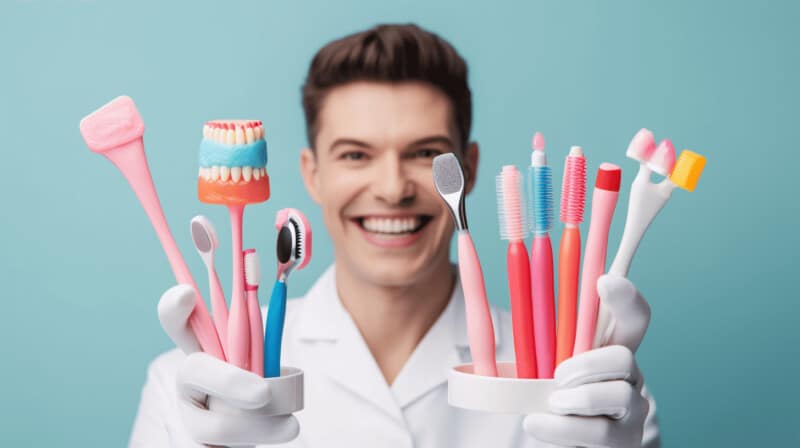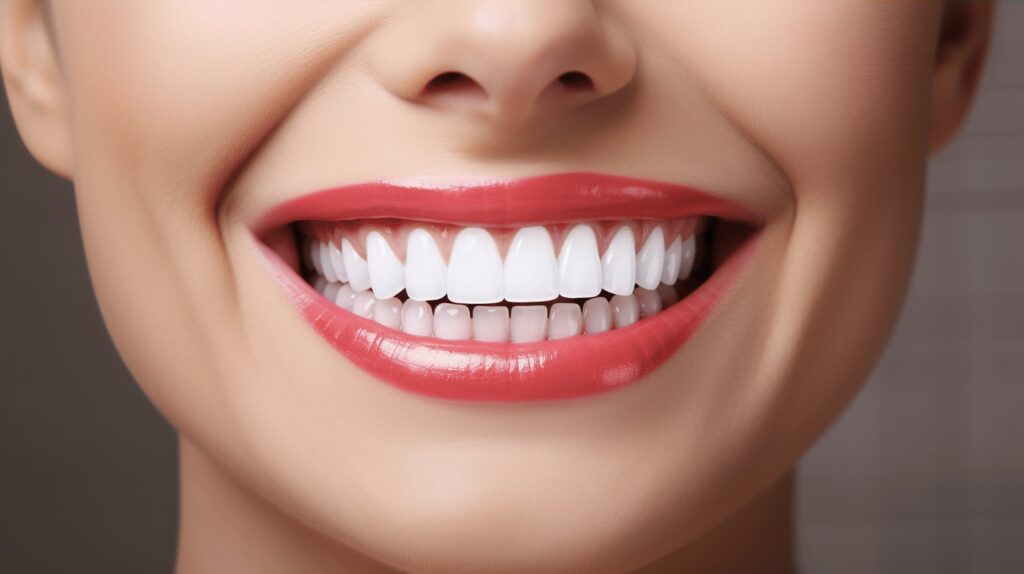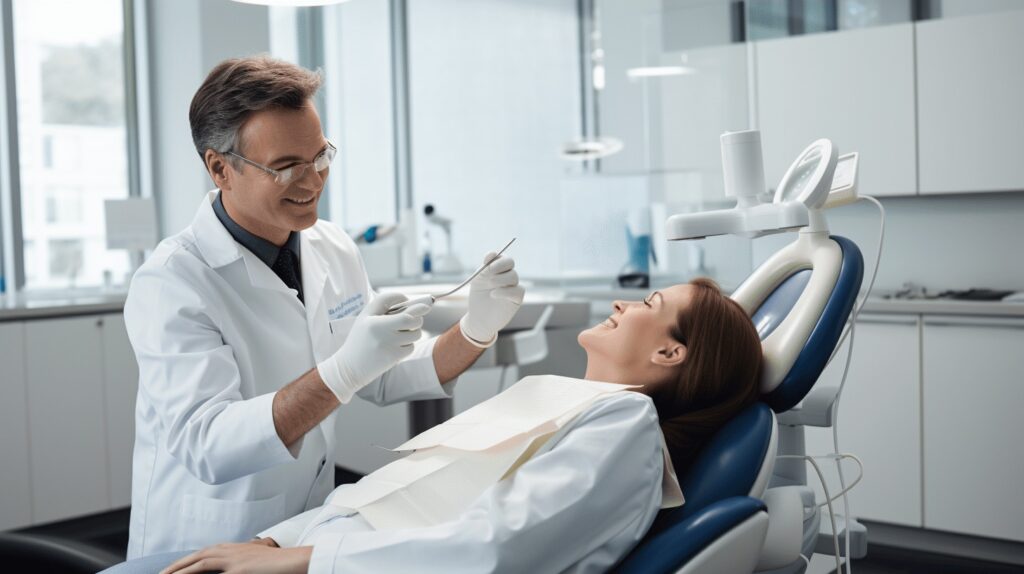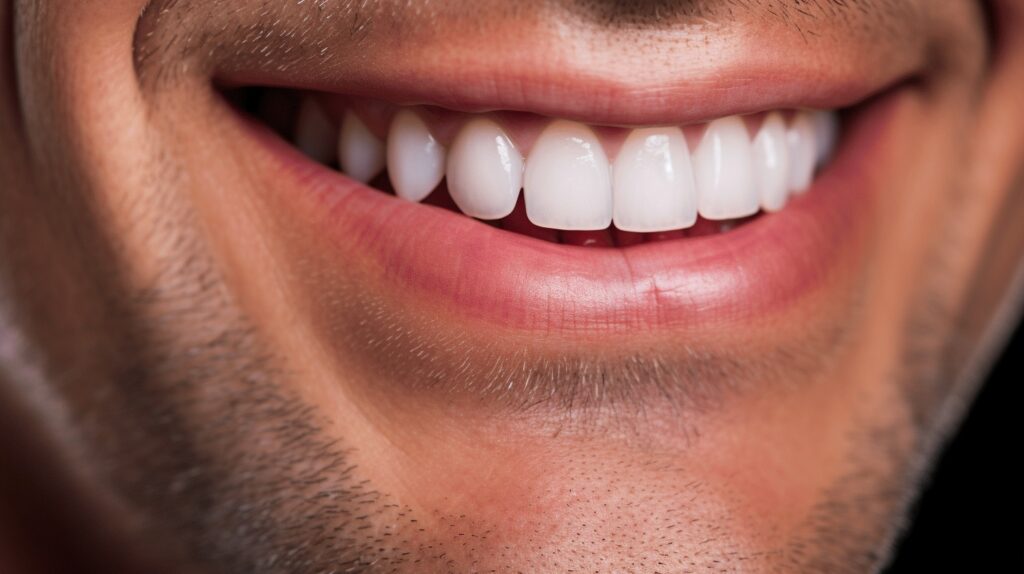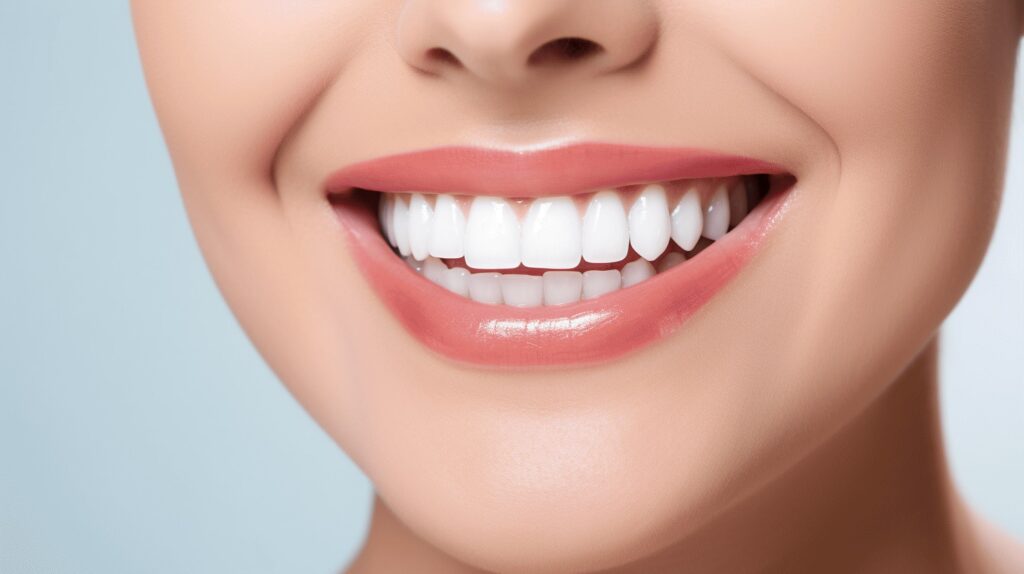Without a doubt, taking good care of our teeth is crucial for maintaining our overall health.
But hey, we all know that. The big question is, how exactly can we ensure our pearly whites are receiving the care they deserve? Enter preventative dentistry, your new best friend in the journey to lasting oral health. It’s more than just brushing and flossing your teeth twice a day. It’s a systematic routine that can dramatically decrease the chances of dental diseases like tooth decay and gum disease.
So, buckle up 🧡, and let’s dive into the world of preventative dentistry, tooth decay, fluoride, dental statistics, and more to draw a comprehensive picture of robust oral health.
Don’t worry, no tooth fairies or horrors await here, just a treasure trove 🏡 of beneficial knowledge. Trust us; you’ll smile more brightly at the end of this journey!
Table of Contents
Understanding Preventative Dentistry
Just imagine your life without toothaches, cavities, gum disease, or other oral health issues.🤔 Quite a refreshing thought, isn’t it? Believe it or not, it’s entirely possible, and the magical term to achieve such oral bliss is ‘preventative dentistry’. But before we talk more about what preventative dentistry does, let us delve into why preventative dentistry is so vital for you.
Importance of Preventative Dentistry
Primary on the list is the fact that preventative dentistry significantly reduces the risk of cavities, gum disease, and other oral health concerns. Quite often, we don’t pay the requisite attention to oral hygiene, resulting in tooth decay and the onset of diseases. These problems, in addition to being painful, can also rob your smile of its sparkle.✨
But that’s not all. Preventative dentistry helps identify and address other jaw problems early on, such as bruxism or teeth grinding. Without timely intervention, these conditions can lead to more severe problems down the line, including headaches, jaw pain, and even tooth loss.😱
Another feather in the cap of preventative dentistry is how it helps forestall dental emergencies such as toothaches and loose teeth. Imagine all the things you could do if you didn’t have to worry about sudden oral discomfort ruining your plans.
How Preventative Dentistry Works
Now that you understand the importance, let’s discuss the role of preventative dentistry in maintaining oral health. It primarily involves routine dental check-ups to ensure your teeth and gums are in the best possible condition. Your dentist also provides professional dental cleanings and recommends specific home-care practices based on your unique oral health condition.
The key to preventive dentistry is regularity; you can’t just visit your dentist once and expect lasting oral health. It’s a journey that every one of us should undertake diligently to maintain that beautiful, heart-winning smile – because, at the end of the day, nothing you wear is more important than that smile.😊
So, let’s embark on this journey towards better oral health through preventative dentistry. Because when it comes to health, prevention truly is better than cure.
The Role of Fluoride in Preventative Dentistry
What if I told you there was a superhero waiting to swoop into your mouth and protect your pearly whites from decay? Sounds too good to be true? Well, meet Fluoride – the silent guardian of your dental health!
Fluoride is more than just a fancy word that pops up in toothpaste commercials. It’s a naturally occurring mineral that plays a crucial role in keeping those chompers strong and robust. But how, you ask? Let’s delve into the specifics.
Fluoride’s superpower lies in its ability to ward off tooth decay. It does so by strengthening the outer surface of your teeth, also known as enamel. Here’s how it works:
- Fluoride seeks out and binds with the calcium and phosphorous already present in your enamel. This fusion creates a formidable armor that is much harder for cavity-causing bacteria to permeate. 🛡️
- Just like a superhero rushing to mend destruction after a villainous onslaught, fluoride has the extraordinary ability to repair early stages of decay.
- Oh, and did I mention? Fluoride’s prowess isn’t limited to defending adults’ teeth. In children, it even helps in the formation of stronger, more decay-resistant teeth that last a lifetime! 🦷
Yes, fluoride is one dental health ally you don’t want to sideline. It’s no wonder that dentists worldwide advocate for fluoride’s continual use in preventing oral health problems. Its inclusion in our daily dental care, be it through toothpaste or mouth rinse, is not only necessary but essential for maintaining our overall oral health.
So, the next time you’re brushing your teeth, and you glance at the tube of toothpaste, remember – your daily dental routine is superhero-charged, thanks to fluoride. And who doesn’t love a bit of superhero action to start the day off right?
But remember, even superheroes need a backup team! Regular dental appointments complement fluoride’s great work, keeping your mouth healthy, and your smile brighter than ever. You’ve got the power of fluoride, so let’s use that to our advantage and pledge to maintaining the best dental health possible today. Because superheroes like fluoride really do keep our smiles shining! ✨
Impact of Preventative Dentistry on Tooth Decay
The idea of visiting a dentist seems dreadful to most of us, right? 🙄 But what if we told you that with preventative dentistry, we could significantly reduce tooth decay? Yes, it’s true! In this section of the article, we’ll delve deep into how preventative dentistry can minimize this common dental issue and why it’s crucial for maintaining good oral health. So, strap in and follow along, as we reveal the incredible power of taking proactive measures for your oral hygiene. 😄
Minimizing Tooth Decay in Children
These days, it’s more important than ever to ensure our young ones adopt good oral hygiene practices. Unfortunately, candy, sugary drinks, and the ever-tempting chocolate bars often lead to damaging dental consequences. However, preventative dentistry – think routine ‘tooth workout’ sessions – significantly lowers the risk of tooth decay in children.
Here are a few reasons why preventative dentistry is crucial:
- Early detection of potential problems: Routine checkups detect issues like cavities, gum diseases, etc., before they escalate into more significant issues. This way, your dentist can nip the problem in the bud! 🌼
- Cost-effective dental care: Preventative care incurs minimal costs compared to treatments required for dental maladies.
- Promotes good oral hygiene: Regular visits to the dentist encourage the habit of good oral health from an early age.
So next time when you think of postponing that dental appointment, remember your child’s bright and healthy smile is at stake! 😁
Prevalence of Tooth Decay
While advancements in dental health have improved our lives, tooth decay remains a pervasive problem. According to statistics we came across, an average incidence of new decay stands around 13.6 ± 0.5%. Even more reason not to skip on preventative care!
What can we as parents, caregivers, or even individuals do to prevent this? Start by embracing routine preventative dental care such as bi-annual teeth cleanings and regular exams. And if you’re wondering how to go about it, our post on Preventing Tooth Decay Tips is just the right tool to help you start your journey to healthy teeth.
In essence, preventative dentistry is your shield protecting you against tooth decay. It’s not just about the pain and discomfort tooth decay brings along; it’s about adopting a healthier lifestyle and putting that confident smile forward! 😊
Statistical Analysis in Preventive Dentistry
Stats don’t lie, as we commonly say in preventive dentistry! When we pry into the realm of numbers and pie charts in this field, we are equipped with a comprehensible picture of oral health trends. We also have a better grasp on which preventive measures are effective, and perhaps more importantly, who isn’t benefiting from them. So, brace yourself (pun intended 🦷) as we delve into the statistical analysis around preventive dental care today!
Prevalence of Preventive Dental Care
First, let’s root canals(ha, more dental puns!) into the prevalence of preventive dental care. In our research, we’ve found that the point prevalence of preventive dental care was lowest among those without health insurance, a staggering 55.7%. This is a clear call to action for us in the health care industry. We need to make preventive dental care more accessible to uninsured populations.
Here’s what the numbers revealed:
- Uninsured: 55.7%
A closely related subject is the prevalence of untreated decay, and once again, we find that insufficient insurance coverage plays a significant role.
Untreated Decay and Gum Disease Prevalence
When we zoom into untouched decay, we are dealing with a prevalence rate of precisely 11.3 ± 0.3%. And as for gum disease? The news isn’t too good either. The gum disease prevalence hovers around 47.2% in the U.S. population.
Here are the numbers:
- Untreated Decay: 11.3 ± 0.3%
- Gum Disease: 47.2%
Regardless of these being national or global numbers, there’s a good chance that this hits closer to home for far too many people.
On a global scale, our analysis yielded alarming results concerning complete tooth loss. We found the global average prevalence of this complete tooth loss is nearly 7% among people aged 20 years or older.
Understanding these statistics in preventive dentistry is critical for us. They not only shed light on the shortcomings of our health care systems but also help focus our efforts towards targeted interventions, ensuring reliable and equitable oral health care services. While the numbers may appear daunting at first glance, they are an opportunity for us – to build a future where everybody can wear a healthy, confident smile! 😄
Remember, as we often say in dentistry, “prevention is better than cure”. So let’s take the preventive route and make the world flash those pearly whites more often!
Economic Impact of Preventive Dentistry
Economic wellness and oral health may seem worlds apart. However, we’ll show you how they’re more closely intertwined than you’d think in today’s segment on the Economic Impact of Preventive Dentistry. 🌍💰
Preventive Dentistry, a proactive approach that advocates for regular dental check-ups, cleanings, fluoride treatments, and sealants, is not just about sporting a million-dollar smile. It’s about saving those millions in the economy. In fact, for every dollar spent on preventive dental care, $8 to $50 can be saved in restorative and emergency treatments. How’s that for a return on investment?
Americans spend more than $124 Billion each year on dental services, and that is merely the tip of the iceberg. When we fail to prioritize preventive care, we end up in the emergency room with severe dental issues, ringing up health care costs and gumming up the economy. 😷💸
“A Penny Saved Is A Penny Earned”: The Financial Upside of Preventive Dental Care
The upshot to all of this is that preventive dentistry can dramatically reduce healthcare costs by stopping dental diseases from progressing into more serious conditions. Here’s how:
- Savings on Restorative Treatments: Think of preventive care as a small investment that wards off the necessity for more aggressive and expensive treatments as dental issues escalate.
- Reduced Economic Burden: Those savings aren’t just personal – a widespread adoption of preventive dentistry could lighten the load on our healthcare system as a whole.
- Productivity Boost: Healthy individuals are more productive. Fewer dental issues mean fewer sick days and more time being productive at work.
So whether you’re looking at it from a personal, societal, or macroeconomic perspective, preventive dentistry is not just about keeping teeth in check — it’s a small act with big returns in our pockets and our economy. As they say, “an ounce of prevention is worth a pound of cure.”
We hope this segment has shed some light on the economic ripple effects of preventive dentistry. It’s not everyday you get to save a smile and the economy too!
Conclusion
Oral health plays a significant role in our overall wellbeing, and preventative dentistry is the key to maintaining it. By understanding the importance of preventive measures like routine check-ups, cleanings, fluoride, and educating ourselves about potential diseases, we can help decrease the prevalence of tooth decay and gum disease, thus reducing their economic impacts.
At Wilshire Smile Studio, we offer a comprehensive range of preventative dentistry services, carried out by our team of seasoned professionals. We aim not just to treat, but to educate our patients on the importance of oral health, offering them a path towards maintaining beautiful, healthy smiles for a lifetime.
Remember, the path to lifelong oral health starts with you, but it’s a journey we’re committed to walk with you, every step of the way.
Book your free consultation with us online or call (323) DENTIST (323-336-8478) today.
Frequently Asked Questions
1. What is preventative dentistry?
Preventative dentistry refers to the practice of maintaining good oral health and preventing dental issues before they arise. It involves regular dental check-ups, proper oral hygiene, and the use of preventive measures such as dental sealants and fluoride treatments.
2. Why is preventative dentistry important?
Preventative dentistry is important because it helps in the early detection and prevention of dental problems. By practicing good oral hygiene and visiting the dentist regularly, you can avoid dental issues like cavities, gum disease, and tooth loss, leading to better overall oral health.
3. What are the key components of preventative dentistry?
The key components of preventative dentistry include regular dental check-ups, proper oral hygiene practices (brushing twice a day, flossing, using mouthwash), a healthy diet, limiting sugary and acidic foods, and the use of protective measures such as dental sealants and mouthguards.
4. At what age should preventative dentistry start?
Preventative dentistry should start as early as infancy. Parents should gently clean their baby’s gums with a soft cloth or brush, and as soon as the first tooth erupts, they should start brushing it with an infant toothbrush and a tiny amount of fluoride toothpaste.
5. How often should I visit the dentist for preventative care?
It is recommended to visit the dentist every six months for routine check-ups and cleanings as part of preventative care. However, if you have specific dental concerns or conditions, your dentist may recommend more frequent visits.


